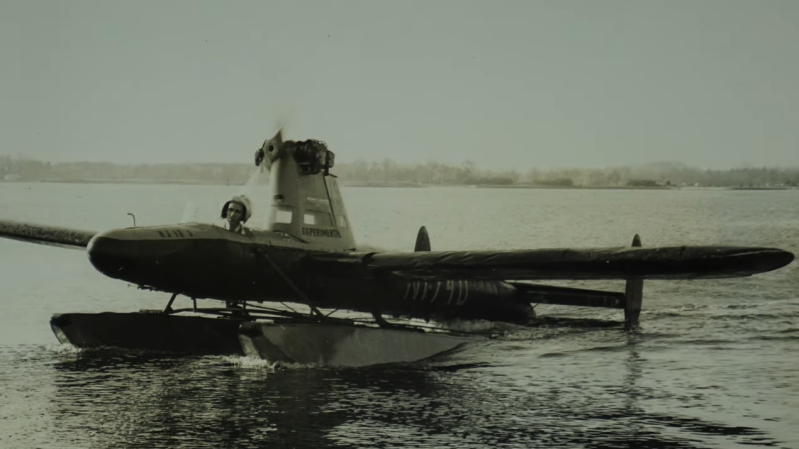
Donald Reid had a passion for applying himself to challenging problems, and in many ways his life’s work was that of developing a prototype submersible aircraft — or flying submarine — for which his son Bruce was a test pilot. [Jesse Moody] brought to our attention a fantastic documentary he created (with a short teaser trailer here) in which he interviews Bruce, and in the process teaches us all about a story that spanned decades and formed an important part of aviation history. Bruce experienced his share of hair-raising moments while testing the craft, but still has all of his fingers and limbs. Still, in his own words, “you wouldn’t be doing that kind of testing today!”
In many ways, the story revolves around defying assumptions. Without context, a “flying submarine” project might sound like a lone kook’s obsession, but Donald Reid was nothing of the sort. He was a brilliant engineer who was able solve problems by applying his skill and intellect with a laser-like focus. And it turns out that getting a submerged vehicle to successfully transition from waterbound craft to airborne is a source of numerous and novel problems that were not trivial to solve. In fact, these problems needed to be solved in order to develop the Tomahawk cruise missile, which is launched by submarine. And that brings us to the lawsuit that bookended it all.
Donald Reid had tried unsuccessfully to get the government interested in his work during the late 50s and 60s. He shared his data, but never got a call back despite clear evidence of work being done in the area. He felt that the later Tomahawk cruise missile — basically a flying mini-submarine — was a direct infringement of his patent. He did, after all, do the hard work of solving the many problems inherent in getting something to transition from underwater to airborne, and the Tomahawk was doing exactly that.

In the lawsuit, Donald represented himself legally. Again the situation defies assumption; without context one might imagine he was somewhere on the sovereign citizen spectrum, filing grievances in between conspiracy theories. In fact, he did so out of necessity — educating himself on law in the process — because no professional lawyer wanted the job of suing the US Government. He took the case all the way to the US Supreme Court as an individual, without the benefit of professional attorneys, which is a rare thing indeed.
The Supreme Court ultimately ruled against him, but it was on such a point that if he had had proper counsel, he very likely would have prevailed. The way patents work in the US can be troublesome for inventors. If an implementation deviates from a written patent in even one way, there is no infringement. For example, if one’s patent states that mechanical energy is stored in a spring and a competitor uses an elastic band instead, there is no infringement. For this reason, patents protect best when they describe an innovation as broadly (and briefly) as possible. In Donald Reid’s case, the government’s position was that there was no infringement because Reid’s work used supplemental buoyancy but the Tomahawk did not. But the patent as written covers selective (or optional) buoyancy, a point which Donald’s son Bruce feels could have been addressed had his father had proper representation. But one gets only a single shot when arguing before the Supreme Court, and that was that.
Before the patent lawsuit capped things off, the actual nuts & bolts development of the project had ended after some twelve years of R&D. It was always about proving the concept, and showing that it was possible for a vehicle to transition from submerged to airborne. Donald Reid always felt his work on the Reid RFS-1 was a success because he demonstrated it could be done, however limited the prototypes were in their capabilities. It’s a legit part of aviation history, and after years of neglect, one of the actual models is awaiting restoration.
In perhaps one last defiance of expectations, the story of the flying submarine isn’t just one of rumor and hazy recollection. Bruce was actually there, and a surprisingly good amount of photos and even video exist of the different models and their testing. You can see it all and learn the whole story in the documentary, embedded below.
Flying Submarine Documentary is a Story of Defied Assumptions
Source: Manila Flash Report
0 Comments